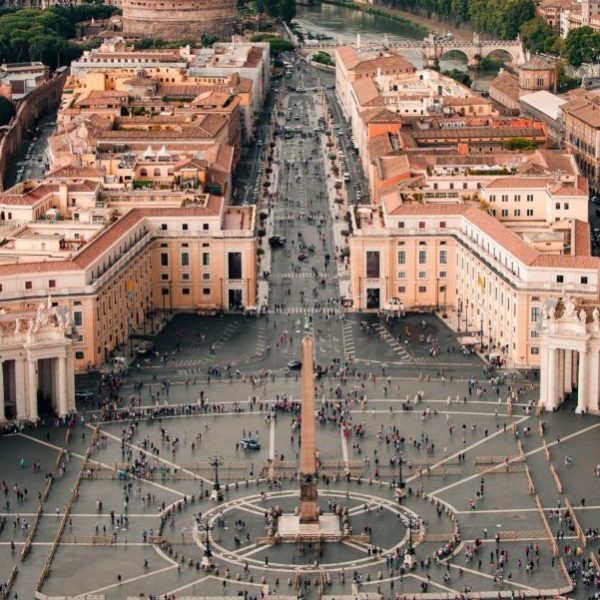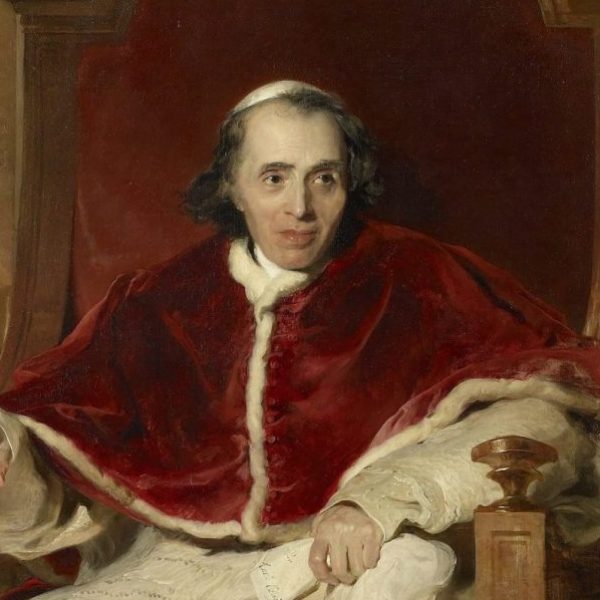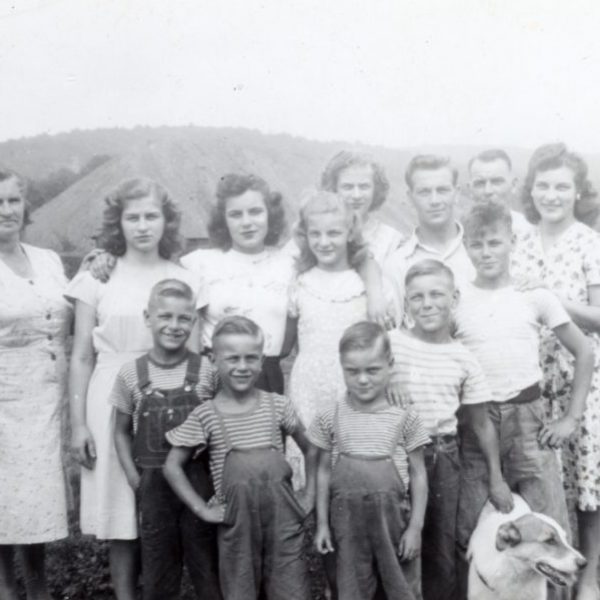Eminent Biography: Donald Weinstein on Savonarola
What does it mean to be a prophet? In his new biography Savonarola: The Rise and Fall of a Renaissance Prophet, Donald Weinstein gives us one answer to this question, tracing the story of religious visionary Girolamo Savonarola from his early loss of faith in society to his later attempts to reform it. On Tuesday, New York Times columnist Maureen Dowd compared GOP candidate Rick Santorum to “a latter-day Savonarola,” only adding to anxious questioning of whether this Renaissance man was a false or true prophet. In this excerpt from the prologue, Weinstein, a leading scholar of Savonarola and the Italian Renaissance, describes the fifteenth-century Florentine world that provided the backdrop for Savonarola’s prophecies and delves into the prophet’s ultimate repudiation of his vision, weighing the influences of religious fervor, ambition, and the excruciating torture of the Inquisition in shaping the friar’s final days.
Donald Weinstein—
On the morning of May 23, 1498, Girolamo Savonarola and two fellow Dominican friars, Domenico da Pescia and Silvestro Maruffi,were hanged and burned in the main square of Florence, the city they had hailed as the New Jerusalem. Relentless interrogation and bone-breaking torture had wrung incriminating admissions from each of them, most devastatingly from Savonarola, the triumvirate’s leader. In a written statement read by an official to a perplexed and uneasy public, fra Girolamo declared that his prophecies of Florentine glory and Christian renewal were bogus, inspired not by God but by his own ambition for worldly glory and political power.
 One of his admirers, the apothecary Luca Landucci, heard the confession and recorded his feelings in his diary. “I was there to hear the statement and I remained dumbfounded and bewildered. I was grief stricken to see such a grand edifice come crashing to earth because it had been built so wretchedly on a single lie. I was expecting Florence to become a new Jerusalem out of which would come the laws and splendor and example of the good life, and to see the renovation of the Church, the conversion of the infidels, and the consolation of the righteous. Instead, I realized, everything was just the opposite. So I had to swallow the medicine: ‘All things, O Lord, are in thy will’.”
One of his admirers, the apothecary Luca Landucci, heard the confession and recorded his feelings in his diary. “I was there to hear the statement and I remained dumbfounded and bewildered. I was grief stricken to see such a grand edifice come crashing to earth because it had been built so wretchedly on a single lie. I was expecting Florence to become a new Jerusalem out of which would come the laws and splendor and example of the good life, and to see the renovation of the Church, the conversion of the infidels, and the consolation of the righteous. Instead, I realized, everything was just the opposite. So I had to swallow the medicine: ‘All things, O Lord, are in thy will’.”
Many who came to witness the execution, Landucci reported, hoped for a sign that would prove the truth of Savonarola’s glorious prophecies. But no sign was forthcoming; he went to his death without a word and their remaining faith was shattered. Still, “a few good people” had so much faith that they braved official displeasure by secretly gathering the ashes that had been ordered thrown into the Arno.
The two contrasting faiths of Landucci’s account still shadow every telling of the Savonarola story. The hawk-nosed, raspy-voiced little mendicant preacher who briefly captivated the first city of the Renaissance with his gospel of republican liberty, civic empire, and universal Christian renewal—was he a God-intoxicated visionary or a thrusting opportunist? The trial record provides no universally satisfying answer. Savonarola’s devotees, his leading modern biographers among them, dismiss the confessions as concoctions of inquisitorial torturers and dishonest notaries and esteem him as a prophet and saintly martyr. Skeptics accept the same evidence as substantially genuine, proof of the corrupt motives that drove him.
But Savonarola is a protean figure who refuses to be confined to such theological pigeonholes as “saint” or “sinner”. I have followed him as he moved through the various phases of his spiritual odyssey, from world rejection to world reform, and have tried to understand the circumstances of each juncture. To deny that ambition played a role in Savonarola’s rise to prominence would be pointless. It is more fruitful to consider to what ends he directed his ambition and to what extent he remained true to those ends as he moved into the limelight and discovered his charismatic powers.
“Prophets,” wrote Henry Mayer in his fine biography of William Lloyd Garrison, the prophet of the abolition of American slavery, “however little they are honored in their time, are nonetheless connected to it.” J. H. Hexter in his introduction to the Utopia of Thomas More referred to Savonarola, in Machiavellian vein, as the most successful and unsuccessful prophet-without-arms of his time and place. Taken together the two observations sum up a main truth about prophets: not only do they profoundly connect to their time and place, they operate in profound tension with them. This explains both their spectacular success and their ultimate failure.
Savonarola’s bold engagement with the ills of his time and his radical vision of a New Heaven and a New Earth mesmerized the people of Florence and made devotees of philosophers, humanists, more than one reigning prince, and even a few Roman prelates; yet to achieve his vision was beyond the power, or the will, of an imperfect humanity. Savonarola came to grief not, as Machiavelli declared, because unarmed prophets are bound to fail, but because like all prophets, armed or not, he mistook his own vision for the fulfillment of history—or, as he would have said, for God’s design. It follows that a biography of Savonarola must be, as his first great modern biographer, Pasquale Villari, understood, a “life and times” in order to explain how he came to this vision, why it captivated so many, and why the society that acclaimed him as a prophet ultimately rejected and killed him.
…
Savonarola lived during the Renaissance, a period named for its fascination, bordering on obsession, with the culture of classical antiquity. There had been earlier classical revivals—since the time of Charlemagne we can count almost one a century—but none of them was so passionate to know and emulate everything about the ancient Greeks and Romans or went about it so methodically. The operatives in those earlier revivals were predominantly clerics in monastic and cathedral centers across Europe who justified their study of pagan philosophy, science, and literature by claiming that this helped them articulate and defend the theology and tenets of their Christian faith. But the protagonists of this new Renaissance were for the most part laymen—notaries, lawyers, scribes, teachers, government officials, physicians, businessmen, makers of the new civic culture of thirteenth- and fourteenth-century Italy—who regarded a knowledge of classical Latin language and literature as enhancing their professions as well as opening new horizons of human art and experience.
The chief spokesman and ideologue of the new classical sensibility was Francesco Petrarca (1304–74), or Petrarch, to call him by his Latinized name. Although Petrarch also advanced the cause of Italian literature by continuing the practice of writing his sonnets, canzoni, and other forms of love poetry in the Tuscan vernacular, he believed that to enter the higher thought world of the writers and thinkers of antiquity it was first necessary to master their language. He and his fellow enthusiasts promoted a method of Latin study that began with the fundamentals of classical grammar, syntax, and vocabulary and advanced to the reading of ancient texts and training in rhetoric, the mastery of literary and oratorical styles. Like explorers of lost continents, classical scholars hunted for copies of ancient writings, identified lost or forgotten authors, compared and edited texts, and established rules for determining the authenticity, accuracy, and primacy of variant manuscripts, thus creating the discipline of philology. They copied inscriptions, studied ancient coins, and excavated and sketched Roman buildings and sites. They also prized ancient science and technology and recovered many influential texts on medicine, geography, agriculture, astronomy, mathematics, and military science.
 Until the fifteenth century, humanists (as teachers of studia humanitatis came to be called to distinguish them from teachers of religious studies) had little access to the faculties of those strongholds of intellectual conservatism, the universities. Since they were obliged to find other means of earning a living and alternate outlets for their intellectual wares, this exclusion had the effect of furthering the dissemination of classical studies in the broader society. Humanists established new schools of the arts and taught in established grammar schools, served as tutors in wealthy households, worked as editors and translators, and dedicated their writings to patrons who could reward them with an honorarium or employment. For their schools they promoted an expanded liberal arts curriculum that included Latin grammar, rhetoric, poetry, music, arithmetic, and history.
Until the fifteenth century, humanists (as teachers of studia humanitatis came to be called to distinguish them from teachers of religious studies) had little access to the faculties of those strongholds of intellectual conservatism, the universities. Since they were obliged to find other means of earning a living and alternate outlets for their intellectual wares, this exclusion had the effect of furthering the dissemination of classical studies in the broader society. Humanists established new schools of the arts and taught in established grammar schools, served as tutors in wealthy households, worked as editors and translators, and dedicated their writings to patrons who could reward them with an honorarium or employment. For their schools they promoted an expanded liberal arts curriculum that included Latin grammar, rhetoric, poetry, music, arithmetic, and history.
By the second half of the fifteenth century the new arts curriculum was established in every Italian city from Milan to Palermo, in the Roman curia, and at princely courts in Italy and north of the Alps. In addition to their belated reception into university arts faculties, humanist-trained professionals served as official historians and biographers, private secretaries and public functionaries, propagandists and public orators. The “orator,” or ambassador, who, as the famous English quip had it, “goes to lie abroad for his country,” had to be competent enough to deliver a formal address in eloquent, polished Latin replete with references to classical writers and ancient history. Familiarity with the ancient poets and historians as well as competence in “good Latin” was expected of high Church dignitaries.
With the spread of humanist education among laymen (and sometimes among their sisters and daughters), preachers hoping to find favor among elite church congregations adopted techniques of classical rhetoric and sprinkled their texts with classical allusions. Ancient philosophy entered the cultural mainstream too, with the growing availability of Latin and vernacular translations of Plato, Aristotle, and others in the new medium of print. Petrarch’s call for the revival of Greek was also answered when the city of Florence offered the Byzantine envoy Manuel Chrysoloras a three-year professorship of Greek in 1397. He was followed by other learned diplomats and churchmen of the Byzantine Empire who came to Italy seeking help against the Turks and remained to initiate a solid revival of Greek language and thought.
The Renaissance was a time not only of new knowledge and linguistic sophistication but also of major changes in taste and aesthetic sensibility. Classical styles and motifs, never entirely absent from medieval culture, now increasingly dictated the forms and decorative details of churches, public and private palaces, monuments, and country villas. In art, classical style came irresistibly into its own in the fifteenth century. Taking their cue from antiquity, artists drew, painted, and sculpted the nude human form, going far beyond ancient art in their observation of anatomy and nature, rendered with new techniques of linear and aerial perspective.
Ancient myths, historical episodes, erotic scenes, and other “profane” subjects took their places in Italian art and literature alongside Christian ones as authors, often now writing in the volgare, or vernacular, drew upon classical comedy, romance, satire, and tragedy and adapted ancient forms to native traditions and experience. Niccolò Machiavelli (1469–1527) is a good example of this fusion: his ribald Italian comedies were inspired by Plautus and other ancient authors, but his plots revolved around the complications of everyday life and his characters were the crafty friars, hypocritical priests, grasping merchants, flirtatious young wives, and randy lovers whom he observed in the streets of Florence.
…
Religious conservatives worried that the rising tide of classical culture was drowning Christian morals and values in a sea of “paganism” and blamed it for everything from the clergy’s fixation on money and power to the spread of sexual license. With little comprehension of such historical realities as the rise of an entrepreneurial economy, the demographic catastrophe of the Black Death, and the spread of secular culture, they applied simplistic moral dichotomies—greed vs. charity, ambition vs. humility, luxury vs. austerity, piety vs. worldliness—and called for a return to a “primitive Christianity” every bit as idealized as the classical antiquity of the humanists.
At the beginning of the fifteenth century the influential Dominican preacher and future cardinal Giovanni Dominici (1356–1420) mounted a public attack on the humanists, charging that they were perverting Christian youth by replacing the authority of the saints with that of the ancients. Dominici was no obscurantist but a sophisticated Thomist theologian, and he made his argument on a philosophical level, challenging humanist assumptions about the primacy of will over reason and questioning the rhetoricians’ faith in the correspondence between words and things. Coluccio Salutati (1331–1406), the eminent classical scholar and first secretary of the Florentine Chancellery, replied for humanism. All knowledge, including studia divinitatis, begins with communication, Salutati memorably declared, and his thesis was elaborated by his successors into a humanist credo: language is the link to reality, the basis of human community and of the connection between past and present. Through language, therefore, we draw both upon our own knowledge of the world and upon the experience of all mankind and gain the information we need to make decisions and to act. Thus the study of language is central to all of human life, to religion as well as to government.
Such claims for language, history, and literary study may seem routine to us, for they have entered the mainstream of Western cultural tradition, but many conservatives viewed them as contradictory to Church teachings, which stressed human depravity and the need for divine revelation and saving grace. Penitential preachers thundered against “pagan” literature and “lascivious” art as provoking unbelief and godless license, and many were convinced that these were signs that Antichrist was at hand. Girolamo Savonarola was one of this chorus of apocalyptic doomsayers. If he had remained only that, however, he would have earned a mere footnote in the history of the era along with such other great fifteenth-century preachers and cultural reactionaries as Saint Bernardino da Siena, Giacomo delle Marche, Giovanni Capistrano, Vincent Ferrer, and Giovanni Dominici himself. How he found his distinctive voice with a message that fused spiritual and moral renewal with social justice and political liberty and, most remarkably, how he—outsider, mendicant preacher, crusader against “worldliness” in all its guises—persuaded Florence, first city of the Renaissance, to embrace him as its prophet are key questions of this biography.
Donald Weinstein is professor emeritus, University of Arizona. He is the author of several books on Italian history and is a world authority on Savonarola and the Italian Renaissance.



